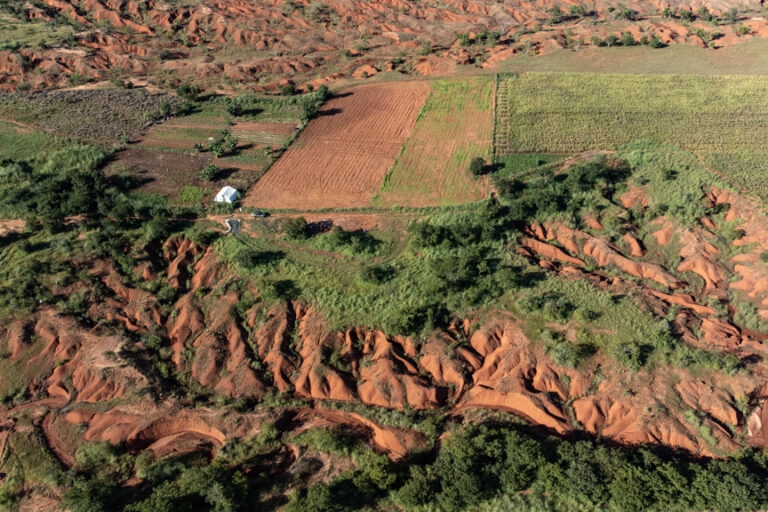
The red landscape and massive valleys of Gilboes, in the Brazilian state of Piaui, look like something out of a sci-fi movie. That’s what makes the green oasis that emerges from the raw land an occasional surprise, writes Mongabay contributor Rafael Martinez.
In his early days in Gilbois, farmer José Rodriguez de Santos had to carry water every day to irrigate the dry soil. He told Mongabay that things are much better today than they were a few years ago. “Our well and technology have improved our lives so much.”
That was during 2006 Ministry of Environment project It aims to combat common desertification in This part of Brazil, Local farmers like Santos have access to modern technology and the tools they need to manage soil and develop agriculture.
“We have improved 1,000 percent since 2006,” Francisco Washington Jr., Santos’s brother-in-law and fellow farmer, told Mongabay. “Here in Gilbois we started with 20 bags of maize per hectare. Today we produce 120.”
Washington also grows vegetables, including lettuce, carrots, garlic, onions, and beans. “When I came to this place, no one thought I would be able to grow anything,” he said. “But now – just look! Every day I go out and manage to collect food for my family and still have enough to sell.
The difference is due to good land management, such as planting trees in furrows to prevent soil erosion and improve soil nutrients.
Fabriciano Neto, a soil and plant nutrition specialist, told Mongabay that the area’s stony soil is rich in phosphorus but poor in nitrogen. Plants can grow if these defects are compensated.
Another technique farmers use is silage, which is a method of fermenting corn and storing it for a longer period. By covering the corn with a tarp and a layer of soil to limit its exposure to oxygen, you can prevent it from rotting. This way, even in the dry season, farmers receive high-quality, nutrient-rich fodder for their animals.
The municipality of Gilbois was the only place where this program was implemented. It continued until 2016, hosting studies and tests on ways to control degradation and restore already degraded areas.
No one knows why it closed, Martinez writes. In the same year, 2016, then-President Dilma Rousseff was impeached and several of her ministers were replaced, including the Minister of the Environment.
Guilbois city councilor José Marlos told Mongabay that there are some prospects for starting the project again, including taking a look at biofertilizer production. However, Martins visited the project’s headquarters and reported that it appeared closed and deserted.
However, the seeds planted by the project are still germinating in Gilbois, changing the landscape and creating alternatives for those struggling to develop their part of this sea of red earth.
This is a summary of the book “In a desert landscape in Brazil, science brings abundant life to the farmer” by Rafael Martinez.
Banner image Of farmland in the desert landscape of Gilbois, by Rafael Martinez for Mongabay.







